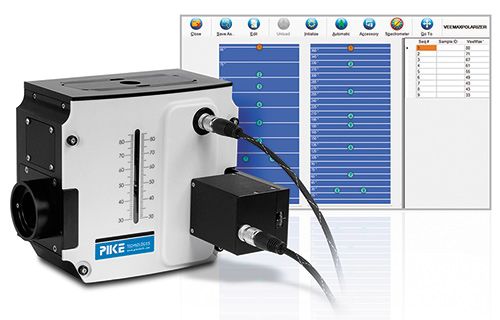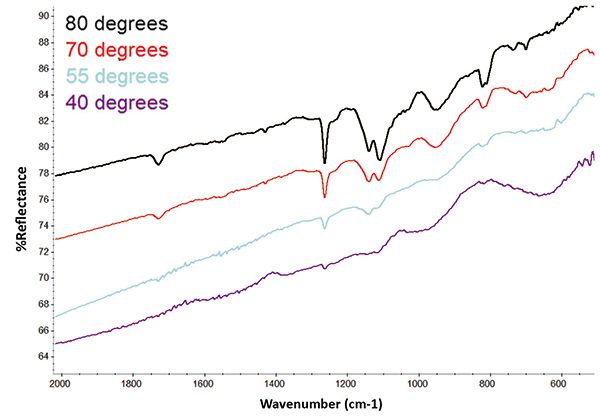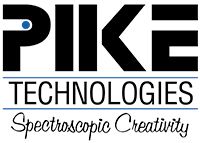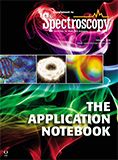Automated Specular Measurements of a Thin Film
Application Notebook
Using an automated sampling accessory the specular reflectivity of a thin film was characterized. Benefits of automation in terms of spectral optimization, time to complete the experiment, and reduction of spectral errors are discussed.
Implementing automation into FT-IR sampling protocols offers several advantages such as increased productivity, reduced sampling errors, decreased labor costs, and elimination of monotonous lab tasks. Specular and diffuse reflection and transmission are measurement techniques that are especially adaptable to automation. This application note explores the efficiency of automated specular reflection measurements in the evaluation of a film coating.
Experimental Conditions
The model sample was a nonstick aluminum foil. Using the Automated VeeMAX III variable angle specular reflection accessory by PIKE Technologies, specular reflectivity was measured at various angles spanning 40–80° (Figure 1). To enhance measurement sensitivity at grazing angles (> 70°), a ZnSe polarizer set to p-polarization was incorporated at all angles. Angle position of the VeeMAX III was controlled by PIKE's AutoPRO 7 software, which interfaces with most FT-IR software packages to trigger data collection. Spectral resolution was set at 4 cm-1 and data collection time was 1 min.

Figure 1: Automated VeeMAX III variable angle specular reflection accessory from PIKE Technologies.
Results
Specular reflection measurements for the analysis of thin films on a reflective substrate are referred to as reflection–absorption, because the beam will reflect off the surface and pass through film reflecting off the substrate. The beam will pass through the coating twice. With its variable angle feature, the VeeMAX III specular reflection accessory allows spectral results to be optimized. Steeper angles of incidence, suitable for thicker films, reduce the pathlength through the film whereas for thinner films the pathlength is easily increased by increasing the incident angle.
Silicone resin is a primary component of most thin polymer coatings on nonstick aluminum foils. The coating is applied and partially cured, and the final curing step is complete when the foil is heated in bulk. Analyzing the foil via IR specular reflection measurements offers insight into the composition of the coating and the impact of processing parameters on the final film chemistry. Figure 2 shows reflection spectra of the foil sample as a function of angle of incidence from 40 to 80°. At lower angles, little chemical information is available because the pathlength through the polymer film is insufficient. As grazing angle is reached, spectra offer more information about the chemistry of the coating; absorbance bands associated with Si- bonds may be observed.

Figure 2: IR spectra of a nonstick aluminum foil coating collected at various incident angles using a variable angle specular reflection sampling accessory.
By utilizing an automated specular reflection accessory during the IR measurements, the overall time to complete the experiment was reduced and data quality and reliability increased. The accessory's software control allowed for all backgrounds to be collected prior to collecting sample spectra. By leaving the background reference and sample in place between spectral collection angles, there is no substitution error introduced because the same sample spot is analyzed.
Conclusion
Using an automated specular reflection accessory for IR measurements of coatings makes optimizing data quality and reliability an easy task. Substitution error is eliminated and overall experiment time is decreased.

PIKE Technologies
6125 Cottonwood Drive, Madison, WI 53719
tel. (608) 274-2721
Website: www.piketech.com

New Study Reveals Insights into Phenol’s Behavior in Ice
April 16th 2025A new study published in Spectrochimica Acta Part A by Dominik Heger and colleagues at Masaryk University reveals that phenol's photophysical properties change significantly when frozen, potentially enabling its breakdown by sunlight in icy environments.
Advanced Raman Spectroscopy Method Boosts Precision in Drug Component Detection
April 7th 2025Researchers in China have developed a rapid, non-destructive Raman spectroscopy method that accurately detects active components in complex drug formulations by combining advanced algorithms to eliminate noise and fluorescence interference.